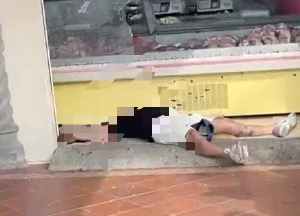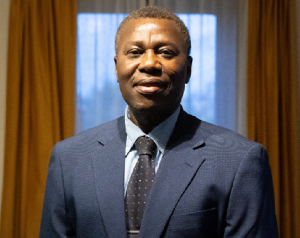Soil degradation holds back African farmers, costing them $68 billion annually and threatening to stall vital food production, Sir Gordon Conway, Director of the group Agriculture for Impact and a professor at Imperial College London, said in an interview with the Thomson Reuters Foundation on Thursday.
“The problem is certainly getting worse,” Sir Gordon Conway said. “Poor farmers don’t have the money, time or labour to prevent degradation or improve their soils,” Conway said. “If they don’t have land tenure, there is no incentive to invest in improving their farms.”
Climate change, the depletion of mineral nutrients, desertification, improper use of fertiliser and a lack of infrastructure are compounding the problem.
An estimated 180 million people in sub-Saharan Africa are affected by land degradation, according to the report “No Ordinary Matter: Conserving, restoring and enhancing Africa’s soils” launched by Conway and other experts.
Urging policymakers to commit to “zero net land degradation” the report calls for: better monitoring of African soil conditions through remote sensing systems, creating incentives for securing land rights for small farmers, strengthening collaboration between soil research centres in Africa and Europe, and increasing financial support for sustainable development.
If African government multilateral financial institutions invest in soil improvements, they could follow the development path of Thailand, which has become the world’s largest rice exporter.
Financing new irrigation systems and other infrastructure, leveraged first by Thailand, could double African food production within 10 years, Conway said.
The average African farmer produces about 1 ton of maize per hectare of land, compared with 2.5 tonnes in India and 11 tons in the U.S. corn belt, Conway said.
If soils are better maintained in Africa, and farmers have the fertilisers and infrastructure they need, he believes each hectare of land could eventually produce 6 to 8 tonnes of maize.
Current trends mean that once arable lands bordering the Sahara desert are experiencing serious wind erosion. Top soil is being blown away, while changing rain patterns are wearing down the earth in parts of West and Southern Africa.
There have, however, been some notable improvements, Conway said. Leveraging finance from domestic banks, Nigeria has invested in irrigation systems, improving rice production, with the aim of being self-sufficient by 2015.
“There are other countries where (increased) irrigation is possible: Burkina Faso, Senegal, and Mozambique,” Conway said. “Thousands of hectares could be irrigated with considerable potential.”
Experts said better soil management to increase food production was vital to avert starvation and strife in sub-Saharan Africa, where the population was expected to surge from 896 million in 2010 to more than two billion by 2050.
Business News of Tuesday, 9 December 2014
Source: Reuters













